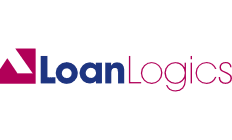With money tight for many households, you might be looking for ways to access some extra cash. If you’re a homeowner, one potential way to do this is to release some of the equity in your property.
Equity refers to how much of the value of your home you own outright. Your home equity should rise over time as you make your mortgage payments and if the value of your home increases. Releasing some of that equity could enable you to pay for important home improvements, pay for school fees or simply live more comfortably.
One way to do this is through a HELOC.
What is a HELOC?
A HELOC, or home equity line of credit, is a type of revolving credit that enables you to borrow against the equity in your home. The amount borrowed is secured against your property and you then receive the funds as a line of credit.
You can draw on these funds for a set number of years, usually between 5 and 10, and this is known as your “draw period”. You can only draw funds up to your set credit limit and you then repay the amount borrowed plus interest.
HELOCs are commonly used by homeowners in the US, Canada and Australia, but they are now starting to hit the UK market.
How does a HELOC work?
A HELOC works a bit like a credit card in terms of the flexibility it offers. Instead of borrowing a fixed lump sum as you would with a standard loan, you can continuously borrow against your line of credit as long as you don’t exceed your credit limit. During your draw period, you can draw on your funds, repay them and then redraw.
This flexibility can be particularly useful if you’re not sure how much money you need – if you are carrying out home improvements and they end up being more costly than expected, you can simply borrow more from your line of credit.
Once the draw period has come to an end and you’ve entered your repayment period, you can no longer access your funds and must repay the amount borrowed, plus interest.
You’ll only ever pay interest on the amount you’ve borrowed – you won’t be charged interest on any funds you’ve left untouched. What’s more, if you’re paying for something in stages, you can draw on funds as needed and you won’t need to pay interest on the whole amount from the beginning.
How do HELOC repayments work?
HELOCs have 2 payment periods – the draw period and the repayment period.
During the draw period, you can borrow money from your HELOC as often as needed. You can also make repayments during that time – these might be interest only, or you can choose to pay off some of the capital too.
During the repayment period, which starts after the draw period ends, you must pay off the full amount borrowed plus interest. You can no longer make withdrawals during this time.
Some HELOC providers allow you to be flexible with your repayments, so you can choose to pay off more each month if you wish to without paying a penalty fee. You will also usually be able to select how long you want your repayment period to be, whether that’s 5 years or 30 years.
Pros and cons of HELOCs
Pros
- You only pay interest on the amount borrowed.
- Flexible repayment options, with some providers letting you overpay without penalty.
- You can borrow more than is possible with a personal loan or credit card.
- Interest rates can be competitive.
- You can borrow when you need to, up to your credit limit.
Cons
- You may have to pay a product fee.
- You must secure the HELOC against your home, which means your home is at risk if you can’t repay the loan.
- You’ll have 2 monthly payments to make – 1 for your mortgage and 1 for your HELOC.
- Interest rates are variable, which means they could increase during the term.
Typical eligibility requirements
To be eligible for a HELOC, you will need to be a homeowner and you will need to have sufficient equity in your property. If you have little to no equity in your home, you’re unlikely to get accepted for a HELOC. Some providers will also ask that your property meets a particular value threshold.
On top of this, you may have to meet certain income requirements and you will need a good credit score.
Next steps







Alternatives to HELOC
There’s no product quite like a HELOC. A credit card follows a similar priciple, but offers much less… credit! But if you’re not sure if a HELOC is the right choice for you, you might want to consider the following alternative ways to borrow.
Home equity loans
A home equity loan is a secured loan, which means you can borrow money against the equity in your property. However, rather than receiving funds as a line of credit as you do with a HELOC, you receive a lump sum. You then repay that amount, plus interest, over a set term in monthly instalments.
The advantage of this is that your payments are fixed, which can help if you’re on a budget. Interest rates can be fixed too. The downside is that you’ll need to have a good idea of how much you need to borrow – if you need more funds, you’ll need to take out another loan.
Personal loans
A personal loan does not need to be secured against your property, which means you can borrow funds without owning a home. Again, you borrow a lump sum that must be repaid in fixed monthly instalments over a set term. However, the amount you can borrow will usually be a lot less compared to a home equity loan or HELOC and interest rates can be higher.
Remortgaging
Another option is to release equity in your home by remortgaging. To do this, you will need to ask your lender to add the amount you want to release to your new mortgage. You will then repay the amount borrowed in monthly instalments over the remainder of your mortgage term.
The biggest downside of this option is that mortgage rates are rapidly rising, making it more expensive. Your mortgage payments will also be higher because you’ll be taking on a larger mortgage. Another drawback is that if your existing mortgage deal hasn’t come to an end, you could pay a hefty early repayment charge to get out of the deal early.
Bottom line
A HELOC could be worth considering if you need some extra cash and you have sufficient equity in your home, particularly if you like the idea of being able to flexibly access your funds when needed.
However, remember that a HELOC is secured against your property, which means your home is at risk if you can’t keep up with your repayments. For this reason, you need to think carefully about applying for a HELOC and take steps to ensure you can afford your monthly repayments.
Frequently asked questions
More guides on Finder
-
Finder Personal Loans Customer Satisfaction Awards 2025
The results of the Finder Customer Satisfaction Awards 2025 are in, and the winner of the personal loans category has been decided.
-
Find the best emergency loan
If you need to borrow funds in a hurry to cover an unforeseen expense, this guide explores your options.
-
Wollit review
Wollit is a credit building service that aims to help improve your credit score by reporting your monthly plan payments to the UK’s 3 major credit reference agencies.
-
JN Bank personal loans review
JN Bank offers personal loans with a focus on flexible repayment options, but what rate can you expect?
-
Methodology for personal loan ratings
You’ll find customer satisfaction star ratings on some of our personal loans provider reviews. Here’s how we came up with them.
-
Updraft loans
Updraft lets you avoid the cost of expensive overdraft fees by giving you a low cost loan when you overdraw on your bank account or credit card.
-
Gambling statistics: How many people gamble in the UK?
44% of Brits have gambled at least once in 2023. We unpacked the latest statistics to see what we are gambling on and how much we spend.
-
Loqbox review
Looking to build your credit score at no cost? Loqbox is an innovative new service designed to do just that.
-
The best personal loan rates in the UK
Looking for a personal loan? Read the definitive guide to find out how to compare interest rates, fees and features to find the right loan for you. There’s a range of loans available to apply for – we’ll help you find the right one.
-
Compare £1,000 loans
Experiencing unexpected costs and considering a £1,000 short term loan? Use our in-depth guide to compare rates between lenders and get a fast and simple estimate of costs.
